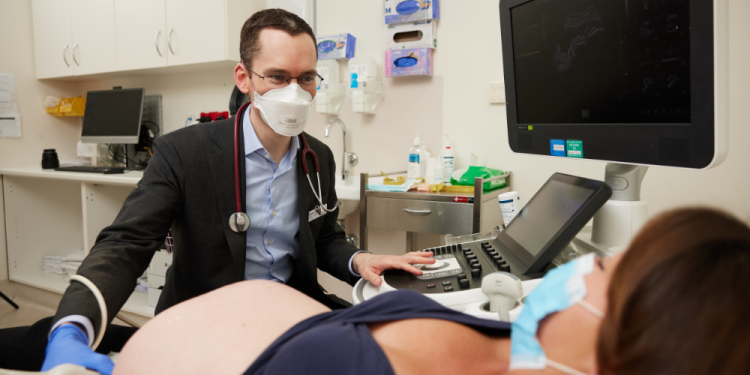
Melbourne’s prolonged COVID-19 isolation period between March 2020 and October 2021 provided researchers at the Women’s with an extraordinary window into perinatal care.
The city endured one of the longest and most stringent pandemic lockdowns in the world (a total of 262 days). Researchers in the Women’s Maternal-Fetal Medicine Department were able to collaborate on the first clinician-led, multi-centre perinatal data collection system for the Melbourne metropolitan area.
The department provides national and international leadership to improve outcomes for mothers and babies with pregnancy complications.
It is leading the way in understanding pregnancy complications including miscarriage, preterm labour, preeclampsia, high blood pressure, poor fetal growth, diabetes and difficult or prolonged labour.
Acting Director, Department of Maternal-Fetal Medicine, Dr Stefan Kane, said the Collaborative Maternity and Newborn Dashboard (CoMaND) project was an observational study analysing maternal and newborn outcomes at Melbourne’s 12 public maternity hospitals.
The study looked at weekly perinatal outcomes including rates of total births, stillbirths, preterm births and neonatal intensive care admissions; and maternal outcomes including induced labour, caesarean section, influenza and COVID-19 vaccination status. Data will be compared with pre-pandemic outcomes between January 2018 and March 2020.
“Melbourne’s unique experience gave us opportunities to collaborate and look at preterm birth and preeclampsia outcomes and translate our findings into improved management strategies for mothers and babies with these pregnancy complications,” Dr Kane said.
“One of the biggest changes that occurred very quickly was the rapid adoption of telehealth and its significant access and economic advantages for women who have limited access to hospitals.
“There is further study to be done, but if we can show that having half of your antenatal visits by telehealth is safe and leads to the same outcomes, then there are significant benefits in its use for many women.”